One thing I’ve noticed about my own sketching activities, but also in comments that you readers and viewers send in, is that whenever I make sketching too complicated, I’m less motivated to do it.
I think we are less likely to keep sketching when we start to see it as a kind of obligation, or a duty, thinking we need to draw something every single day without fail or were not doing it right. I think hustle culture has definitely changed our perception about this, and removing ourselves from its influence, and from perfectionism can be so helpful. Not every page needs to be outstanding or free of mistakes. It’s pressure like this that will kill your creative flow and your growth as an artist. I don’t know, what do you think? I’ve been trying to incorporate more explorations or failed drawings into my sketchbook tours, just to see how it feels. And it feels weird.
Here’s a video version of this post:
I’d like to invite you to change this, to just experiment and draw what comes your way, or what holds your interest. Or just sit there and do nothing sometimes.
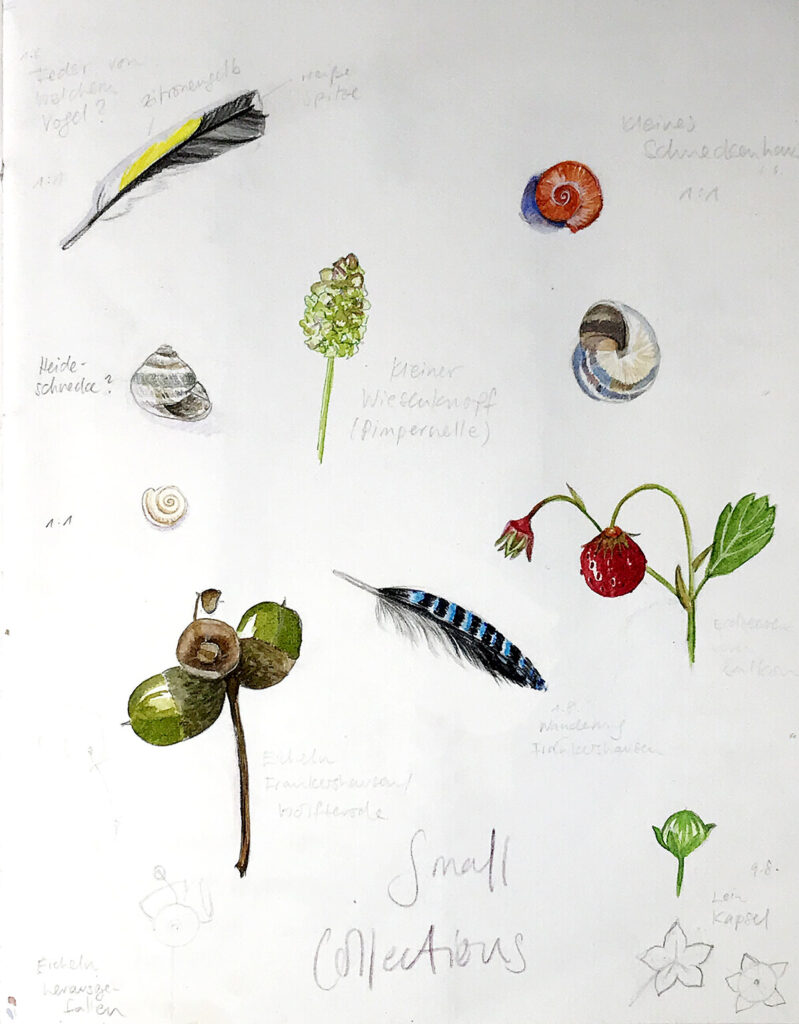
It’s your sketchbook, and you decide what goes in, and it can be what you want it to be. And if you make a mistake, or create a sketch you don’t like, it’s not the end of the world. Make a mental note, or maybe even a note next to the sketch and change your approach next time. At the end of the day, it’s only paper as they say. And I’m imagining they are a bunch of highly knowledgable, but kind artist samurai, a group of wise doodlers with pencils as their swords.
What I also would like to give you as a tip: don’t overcomplicate your sketching, and don’t overcomplicate your tools. You don’t need fancy journals, or new pens, or a big paintbox. Those can also hold you back. You’ve certainly heard of gear acquisition syndrome? This means collecting art supplies without doing anything with them. I mean, it’s a hobby in itself, and that’s ok, but if you want to make art or build a sketching habit, it’s not really helpful.
All you really need is a pen or pencil and a sketchbook if you want to keep things really easy. Something to draw in, and something to draw with. You can totally get away with that setup, and you can always expand your tools later.
Color is nice, too, and I find a simple and small set of watercolors is enough. I’ve been using the same metal palette for a few years. There are really simple, useful readymade sets out there that work great for sketching. I usually bring only one or two round brushes. I like synthetic brushes because I tend to lose stuff from time to time, so I never bring too expensive materials.
Keeping materials on the light side also means it’s much easier to carry them wherever you go, and much more likely that you actually use them. If you don’t have to make a lot of decisions about which pen to start with, you’ll have more time for observing and sketching.

And don’t overthink it. Nature journaling and field sketching are great because you have this immediate connection and reaction to what is around you. In the same way, you can keep a personal journal or go travel sketching. Keep it simple.
You don’t have to have complex layouts if that’s not something that comes natural. Try working fast with gestural sketches that don’t take a lot of time (1-3 minutes), or try really loose watercolor sketches. I often just finish my drawing when I’m in the field, and then add color when I come back home. This also trains my color memory. And sometimes, i really like to spend time with a subject, like this hydrangea. This allows me to focus one one thing and kind of zone out while I‘m sketching.
Try out working small, especially for landscapes – I love small landscapes, because I can do several of them and don’t feel the pressure of finishing an entire page. Simplify what you see, and don’t focus too much on details – that way you will get results faster.
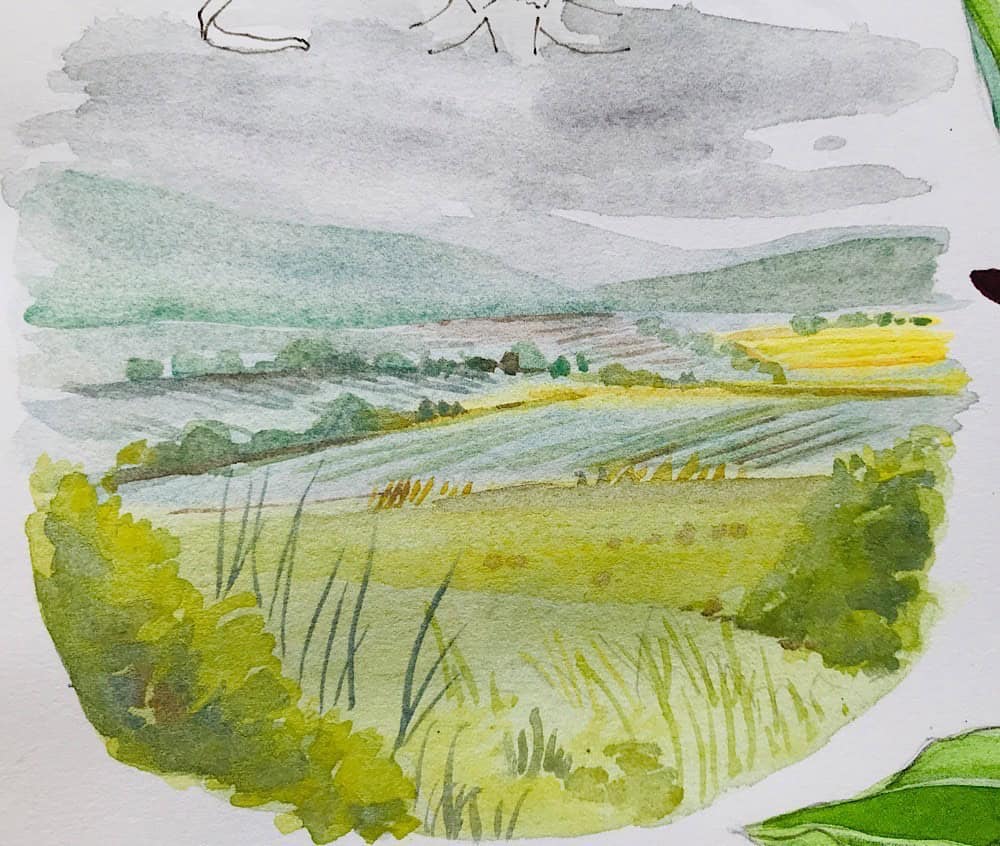
Of course, when you’ve built journaling into an actual habit and are sketching regularly, you might want to change these rules. I love drawing full-page landscapes these days, and I love detail. But if I had started like this, I would have given up sketching, because one drawing would have taken up too much time, and it would have been overwhelming to think about finishing it. So instead, celebrate your small sketches and quick observations, the fleeting impressions you capture.
Remember, it’s your sketchbook, you make the decisions and the rules. You need to enjoy doing this, and make it work for you. Sketching and journaling regularly can help us through stressful times, and observing nature will almost always be comforting, or even entertaining (or at least distract us from our thoughts). If you’ve managed to do that with your sketching, then I would consider it a big success.
So remember, keep it simple. Don’t overthink. Enjoy the process.
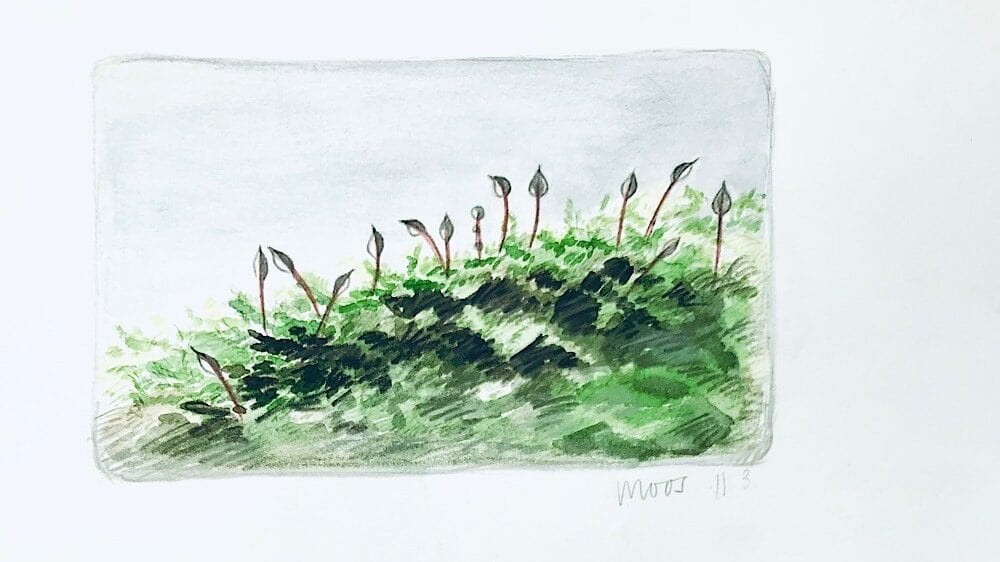


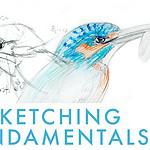
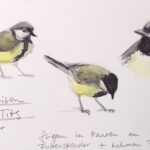
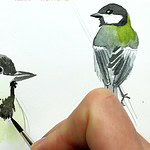
Great advice! This will help encourage me to sketch & paint landscapes more, without worrying about putting in too much detail. Just swatching the colors might be enough to start, then gradually adding basic shapes in the scene with those colors. Thanks for the encouragement!
Make it as easy as you can to start. I find color swatching to be great for this, or just a very small tonal sketch in which I figure out the composition.
Julia,
I love how you help me be more relaxed about drawing and journaling. The perfectionism is so strong in me. I am trying to go toward art whether it is performing, drawing and learning filmmaking. I get so impatient with myself. Thanks so much for your wonderful blog.
I heard a famous photographer once say that the first day he is in a location he just walks around to look at angles, light and shadow and how it changes, and color, a sort of digestion of what he is seeing; only the next day does he get his gear out to take photos. While that may not be convenient for a sketcher, the same method can be used in shorter bursts. Just sit and watch for a while to get the “feel” of a place or thing, and then begin sketching.
One of the challenges I have given myself lately is to sketch what is right in front of me no matter how UNpicturesque, to see what happens on the page. Many of those are not successful, but I’ve learned something from each of them, and sometimes they can surprise you with beauty that is invisible in the actual scene.
I also have a small daily sketchbook with each page divided into two sections, so the sketches don’t get large unless I feel up to making them larger, in which case I simply ignore the dividing lines.
As for gear acquisition, that is so true, and it can be overwhelming. At the moment I am packing gear to take with me for the winter which I will be spending in another location, and the decision-making process is agony. For several years now I have not bought any new art supplies and simply used what I already have, but even that is still too much. So I think I will heed your advice and stick with the minimum: A small sketchbook, a couple of favorite pens with my favorite drawing ink (Noodler’s Lexington gray) and a basic watercolor set, and see what happens.
Thanks for your good advice, and happy sketching!
That is so interesting to hear, thanks for sharing!
I love your approach of sticking with a seemingly uninteresting subject, and I too think that there is always something to gain from these sketches. No day without line, as they say. 🙂
Your selection for your current sketching kit sounds good, I think the worst that can maybe happen is that you realize you need another pen or pencil, and swap it out.
Julia, I love your posts, look forward to them and always feel refreshed and inspired by them. However, I am an entrenched perfectionist with little patience for my “mistakes” so it is hard to bring myself to do the work I need to do in order to improve. I like your keep-it-simple approach. I know I will never improve unless I keep trying, with patience. I do make endless color palette studies because it feels safe. And maybe for now that is enough, but I wish I could keep myself more motivated to push a little further into field sketching. Thanks for all your tips over the years!